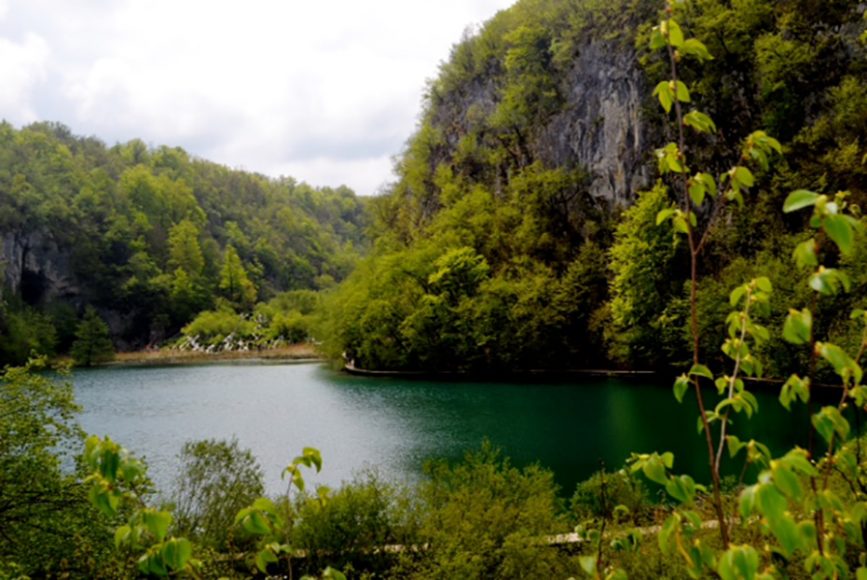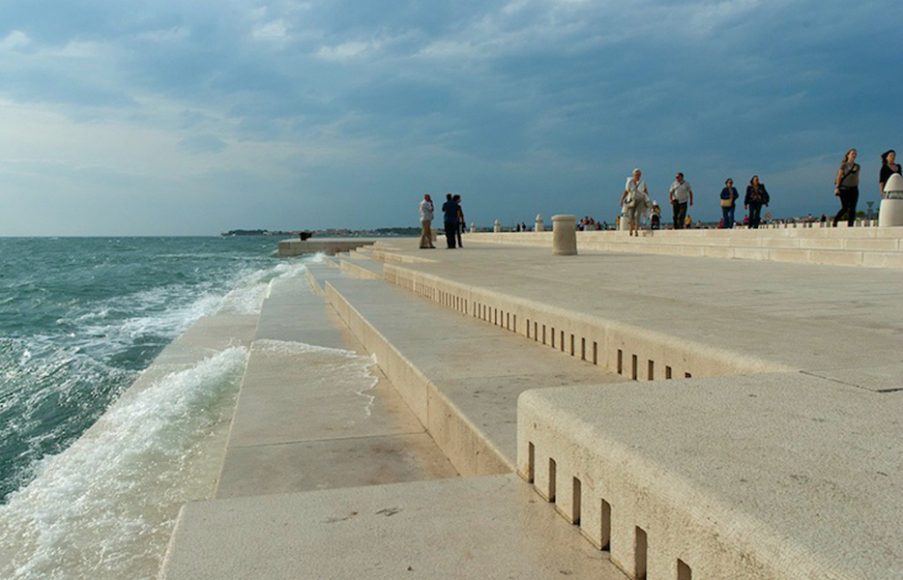You say you like your cruises small and intimate, not one of those gigantic “floating cities” with 5,000 to 6,000 passengers, where chaos reigns and you need a sign in the elevator telling you what day it is.
Well then, a cruise on the Karizma, a Kompas Adriatic Cruise vessel carrying just 35 passengers, might just be the ticket. I cruised on this ship recently and explored many destinations in Croatia. Each was cruise-worthy, each captivating and, by the very nature of the line’s strategy and planning, each destination allowed us to spend adequate time to experience the site fully. We toured the cities with capable guides and, at times, even overnighted so that a romantic dinner at a seaside café or dance-til-dawn clubbing was a distinct possibility.
The weather aboard the Karizma was fresh and bracing so the Jacuzzi was most welcome, as were the lounges on the top deck where we had a bird’s-eye view of the sea as we peeked out from under fluffy blankets. The sky was almost always a piercing blue, the water mirror like. It was there that I found quiet and solitude. Watching the world go by silently and smoothly turned out to be one of my favorite activities.
The Karizma is dedicated to tranquility (read laid back). The crew is fun and friendly; the beds, cozy and comfy. You’ll have breakfast and lunch onboard, leaving you free to wander each port for interesting dining options — all the better to capture a town’s true flavor. During the day, between ports, you’ll have plenty of time to kick back, meditate, cloud watch, water wonder, and commune with the pristine scene that enfolds before you.
Our Croatia experience began in Zadar, the oldest continuously inhabited city in the country, tracing its origin to the fourth century B.C. Today, Zadar is an historical center of Dalmatia, one of the most popular tourist destinations, and is considered “Croatia’s new capital of cool.” For me, the highpoint in Zadar was our visit to the “Sea Organ.”
Built under large marble steps leading to the Adriatic, the “Sea Organ” is a crooning structure that creates enchanting sounds not unlike the “song” of a whale. Conceived in 2005 by architect Nikola Basic, the work has waves and wind pushing air through underwater channels whose resonance pours forth and out onto the steps above. The result is an experience hauntingly memorable. In 2007, the “Sea Organ” won the European Prize for Urban Public Space as a “perfect grandstand for watching the sunset over the sea ….while listening to the musical compositions played by the sea itself.”
Another highlight, just 80 miles from Zagreb, is the astonishing Plitvice Lakes National Park, Croatia’s oldest and largest park. An emerald Eden and a UNESCO World Heritage Site, the park has 16 terraced lakes linked by boardwalks, streams and tumbling cascades. You can hike to a canyon or to the cave at the base of the national park’s tallest (256-foot-drop) waterfall. A site not to be missed.
Split is the celebrated town known for its beaches and the fortress-like complex at its center, Diocletian’s Palace. This structure was erected by the Roman emperor in the fourth century and its vast remains include more than 200 buildings. We passed its white stone walls, sauntered through its courtyard and finally came upon numerous shops, cafés and hotels. Inside the palace, an a cappella group of singers (called Klapa) serenaded us with folk tunes. The city is vibrant, combining a balance of tradition and modernity, a great place to see Dalmatian life as it is really lived.
Croatia’s premier party town has got to be Hvar. In high season, it can host up to 20,000 people a day, an improbable feat in this small village where 13th-century walls surround ornamented Gothic palaces and traffic-free marble streets. If you feel up to a fairly strenuous walk, hike to the town’s imposing fortress dating from 1278. Arrive at sunset when the view is unparalleled and the town is bathed in a golden light. This experience was reward enough for the hike and our treat (of course, we needed one) was checking out the popular cocktail bar, Carpe Diem, sitting on its flowering terrace and sampling some delicious drinks. Lasting impression: Hvar equals fun.
Mljet is the most forested island in the Adriatic where untouched nature contributes to a kind of mysticism over its olive groves, vineyards and woods. It is said that the Greek hero Odysseus spent holidays here. The Mljet National Park is part of the network Natura 2000, the largest ecological network in the world, whose mission is to ensure the survival of Europe’s most endangered species and habitats. Hiking and biking paths are spread throughout the island and, as it’s always shady, you’ll trek around in comfort even in the heart of summer.
Our seventh and last day found us in the UNESCO World Heritage city of Dubrovnik. Here the atmosphere is clearly Mediterranean meets medieval. This city of 42,000 was an important sea power from the 13th century on. Although severely damaged by an earthquake in 1667, this historic city managed to preserve its gorgeous Gothic, Renaissance and Baroque churches, monasteries and palaces. We strolled the Placa with glossy, limestone-smooth lanes replete with cafés, galleries, shops and restaurants enclosed by walls that protected a civilized, sophisticated city for centuries. Although the world was aghast when the city was shelled during the Croatian War of Independence in the early 1990s, it has since returned with strength and glory. Dubrovnik enchants anew.
Experiencing these Croatian ports-of-call was an extraordinary adventure, and it is heart-warming to find that traditions are alive and well with age-old religious ceremonies, folk music, dance and, let’s not forget, superb wines. Onboard, the Captain’s Dinner with entertainment by a group of Klapa Singers, an affable crew and the snug corners where we sat and chatted with new friends will linger in our hearts. Yes, there is certainly something to be said for the cozy warmth of a small, intimate cruise. Ziveli!
For more, visit kompas.net/cruises/.








